Burnout Among Working Women in the U.S.: Causes, Impact, and What HR Can Do About It
Last Updated Nov 13, 2025

Key Takeaways
- Burnout develops when chronic workplace stress goes unmanaged and settles into exhaustion, detachment, and a reduced sense of accomplishment. This pattern can linger for long periods and often affects women at higher rates due to persistent pressures in both work and home life.
- Women face elevated burnout risk because many navigate a blend of caregiving demands, workplace bias, and nonstop expectations. These forces create a load that drains energy, narrows recovery time, and makes sustained wellbeing harder to maintain.
- Burnout reshapes women’s health, career progress, and day-to-day functioning in measurable ways. It influences physical and mental health, reduces performance, narrows opportunities, and contributes to stalled advancement or workforce exit.
- Systemic support from employers is essential for easing burnout and protecting women’s long-term engagement.Workload management, flexibility without stigma, caregiver support, inclusive cultures, and clear development paths give women the structure needed to sustain their energy and ambition.
- Personal strategies help women rebuild resilience and regain control over their wellbeing. Boundaries, rest, social support, and goal realignment provide space for recovery and strengthen the capacity to navigate ongoing demands.
Women are burning out at an alarming rate. Nearly half say they feel exhausted, undervalued, and overwhelmed on a regular basis. And the numbers aren’t improving.
The causes aren’t personal. They’re structural. From the double shift of work and caregiving to always-on expectations and limited support, many women face a constant uphill climb. It’s no surprise burnout hits harder—and lasts longer.
HR leaders are uniquely positioned to turn this around. By addressing the real drivers of burnout and rethinking how support shows up at work, it’s possible to protect health, retain top talent, and create a culture where women can thrive.
Explore the key reasons burnout is rising, and uncover practical ways to build a workplace that sustains, supports, and energizes working women.
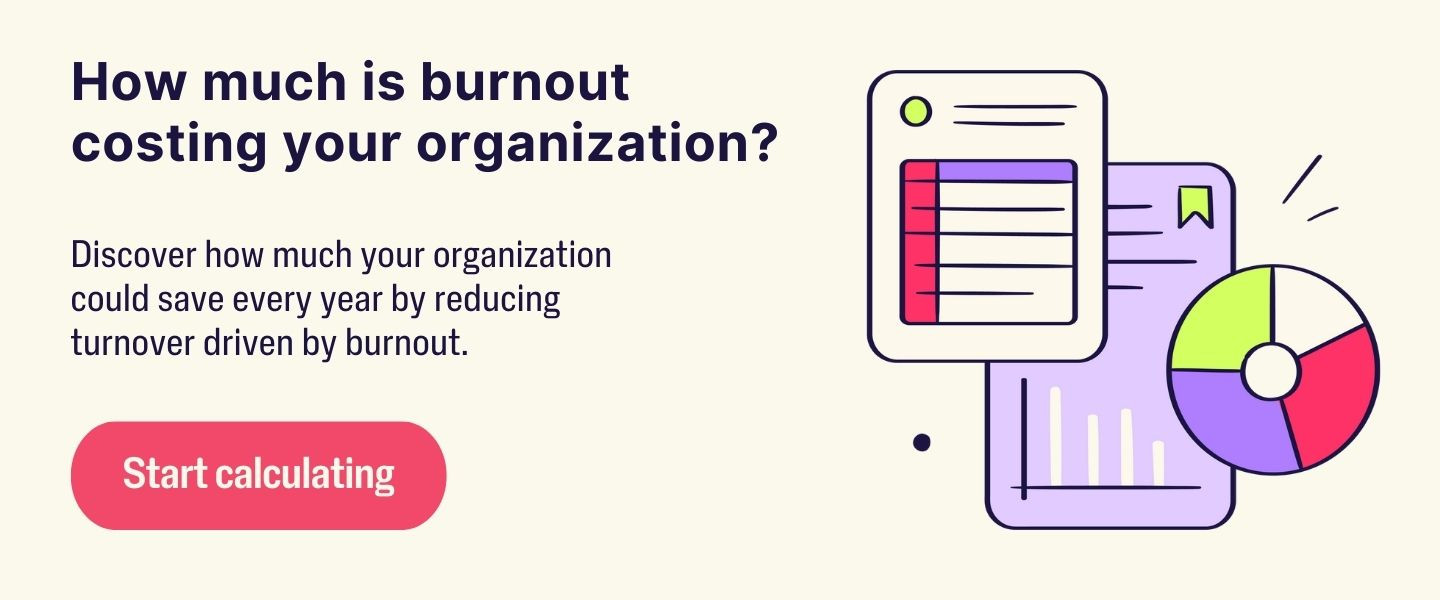
Understanding Burnout and Why Women Are at Risk
What is burnout? The World Health Organization classifies burnout as an “occupational phenomenon” resulting from chronic workplace stress that has not been successfully managed. In other words, burnout starts at work – it’s not simply caused by personal life or character flaws. Burnout often manifests as a mix of:
- Exhaustion – feeling physically and emotionally drained, with persistent fatigue that rest doesn’t fix.
- Cynicism/Detachment – becoming emotionally distanced and negative toward your job, colleagues, or duties.
- Inefficacy – a sense of reduced accomplishment or confidence, feeling ineffective or unproductive at work.
These core components tend to feed into each other, creating a vicious cycle of worsening burnout over time. For example, deep exhaustion can lead to cynicism, which in turn undermines one’s effectiveness, fueling more stress.
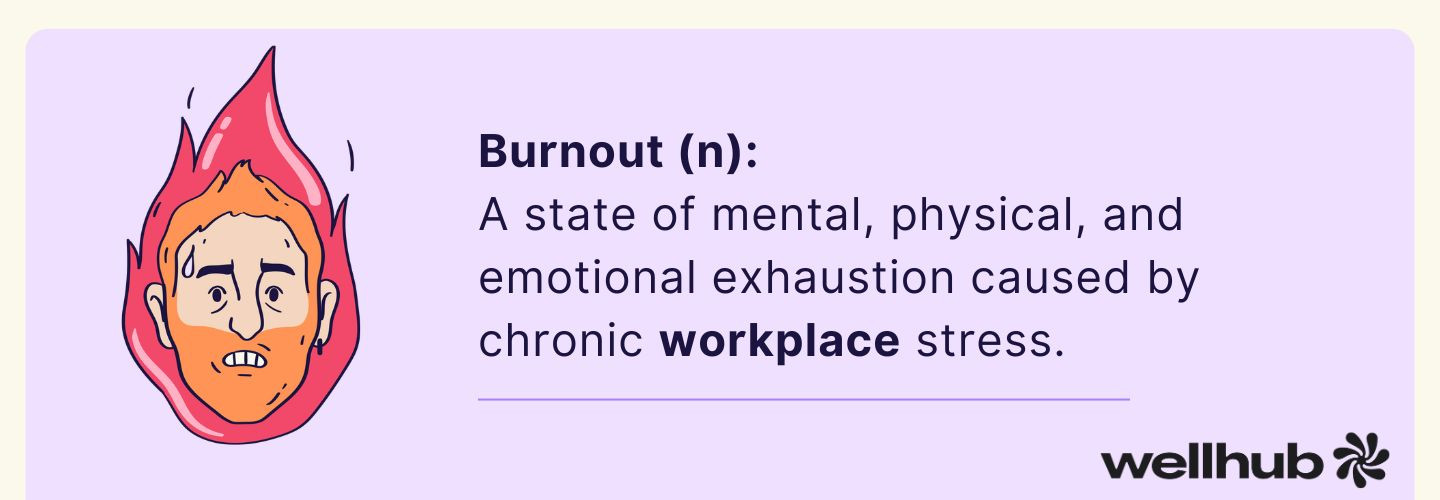
Burnout is not the same as ordinary stress. With short-term stress, you might feel anxious or irritable, but those feelings typically subside when the stressor is removed. Burnout, by contrast, is more enduring and pervasive – it lingers and can even persist long after a person leaves a stressful job. Burnout often brings a sense of hopelessness or apathy rather than just tension. Physically, stress might cause temporary headaches or a bad night’s sleep, whereas burnout can lead to chronic insomnia, a weakened immune system, or serious conditions like cardiovascular problems.
Why focus on women? Research shows that working women are experiencing burnout at higher rates than men, and the gap is widening. In a late-2023 survey, 46% of women reported being burned out, compared to 37% of men. Another U.S. poll found a similar disparity: about 44% of female staffers said they feel burned out from their jobs, versus 36% of male workers. This isn’t because women are “weaker” or less capable of handling stress – it’s because many working women face a unique convergence of pressures. These include balancing professional demands with disproportionate caregiving and household responsibilities, navigating workplace biases and discrimination, and often feeling a lack of support or recognition.
It’s telling that the burnout gender gap doubled during the pandemic. In 2021, 42% of women reported being burned out often or always, versus 35% of men – a jump from the previous year’s 32% vs 28%. The pandemic strained all workers, but it hit women harder: schools and daycares closed, forcing many mothers to supervise children’s remote learning while juggling jobs. As a result, women’s stress skyrocketed. Even in mid-2022, as hybrid work became more common, 53% of women said their stress was higher than a year prior, and almost half felt burned out. Clearly, burnout among women isn’t a fleeting issue – it has continued even as the crisis subsided, pointing to deeper systemic problems.
How Widespread Is Burnout for Working Women?
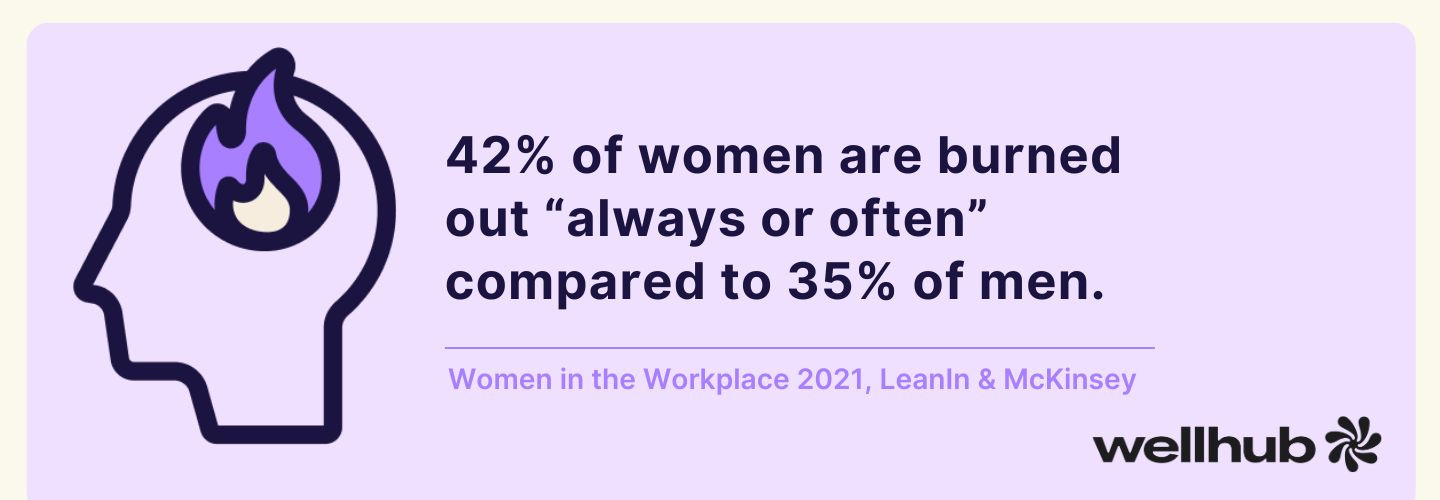
Burnout has become remarkably widespread among working women in the U.S. by both anecdotal and statistical accounts. Consider these data points that illustrate the scope of the problem:
- Most women experience burnout symptoms: In general workforce surveys, over half of American employees say they’ve felt burned out at some point. Women consistently report higher levels of frequent burnout. A 2022 global survey of 5,000 working women (including U.S. respondents) found that nearly half rated themselves as consistently burned out and an equally high percentage reported their mental health as “poor”. Even in industries known for high stress across the board, the trend holds – for example, female physicians and nurses report burnout at rates significantly above their male counterparts.
- Burnout surged during the COVID-19 pandemic: Women’s burnout rates spiked amid the pandemic’s peak and have remained elevated. The Lean In/McKinsey “Women in the Workplace 2021” study – the largest-ever study of corporate women – revealed that one in three women considered either downshifting their career or leaving the workforce that year, up from one in four the year before. This escalation was tightly linked to burnout and exhaustion. In that same study, 42% of women reported feeling burned out “often or almost always,” a substantially higher share than men. The pandemic exposed and intensified the fragile work-life balance for women, many of whom took on greater childcare, eldercare, and household burdens when support systems collapsed. The term “she-cession” was coined as millions of women dropped out of the labor force in 2020–2021. While many have returned, stress levels remain high – in 2024, about 51% of women say they feel more stressed than a year ago, indicating that relief has been slow.
- Current trends (2023–2025): As workplaces transition to new norms, burnout is still a top concern. Hybrid and remote work have provided flexibility but also blurred boundaries between work and home for many women. Paradoxically, working from home can increase burnout risk – for instance, constant connectivity and the lack of clear “off” hours contribute to overwork. A Future Forum survey noted that 81% of remote workers check email outside work hours (nights, weekends, even on vacation), a habit linked to burnout. For women, who often shoulder evening domestic duties, this always-on expectation can be especially draining. On the other hand, return-to-office mandates have created stress for those who benefited from remote work’s flexibility (for example, mothers or caregivers). In 2022, 60% of women in hybrid roles felt excluded from important meetings or decisions, suggesting that new work arrangements can carry their own stresses and feelings of isolation. Moreover, many women remain hesitant to speak up about mental health struggles: under half feel comfortable talking about stress or burnout with their managers, often due to stigma or fear of being seen as less committed.
In short, burnout among working women is pervasive, affecting women at all levels, from frontline employees to senior leaders. In fact, women in leadership roles may face some of the highest burnout rates. One analysis found more than 50% of women in managerial or executive positions feel constantly burned out. That aligns with other findings (e.g., the Lean In study) that senior women often experience daily microaggressions and pressure to always be available, contributing to chronic exhaustion.
Why Are Working Women Experiencing Burnout More Often Than Men?
Burnout is not caused by personal weakness: it’s a symptom of an over-stressed, under-supported environment.
Many working women contend with a perfect storm of workplace and societal factors that increase burnout risk:
The “Double Shift” – Work and Home
Women, on average, continue to bear a disproportionate load of household and caregiving responsibilities outside of their paid jobs. Even as women have made strides in the workforce, expectations around domestic duties haven’t receded equally. During the pandemic this became starkly evident – mothers were often the ones navigating remote schooling, childcare gaps, and eldercare, on top of their jobs. But even in 2025, data show the imbalance persists. Deloitte’s Women @ Work report notes that women are far more likely to handle most childcare and housework than their partners, even when both work full-time. Women who shoulder the bulk of family responsibilities report lower mental well-being and more stress. This constant juggling act means many women never truly get to “clock out” – their second shift at home begins when the first shift ends. Over time, the lack of rest and personal time erodes mental resilience, making burnout more likely.
Always On, Never Enough
In the workplace, women often feel they must prove themselves continually to overcome biases. This can manifest as taking on heavier workloads or saying “yes” to every request to avoid being seen as less dedicated than male colleagues. Unfortunately, employers sometimes reward overwork or have cultures that implicitly expect women to handle both career and family flawlessly. Long hours, late-night emails, and reduced boundaries hit women hard, especially single mothers or those with young children. Workload and time pressure are top causes of burnout for everyone, but women often face extra time pressure when the day’s work doesn’t end at the office. Young women and millennials (who are often in early/mid career and raising families) report some of the highest burnout rates of any demographic.
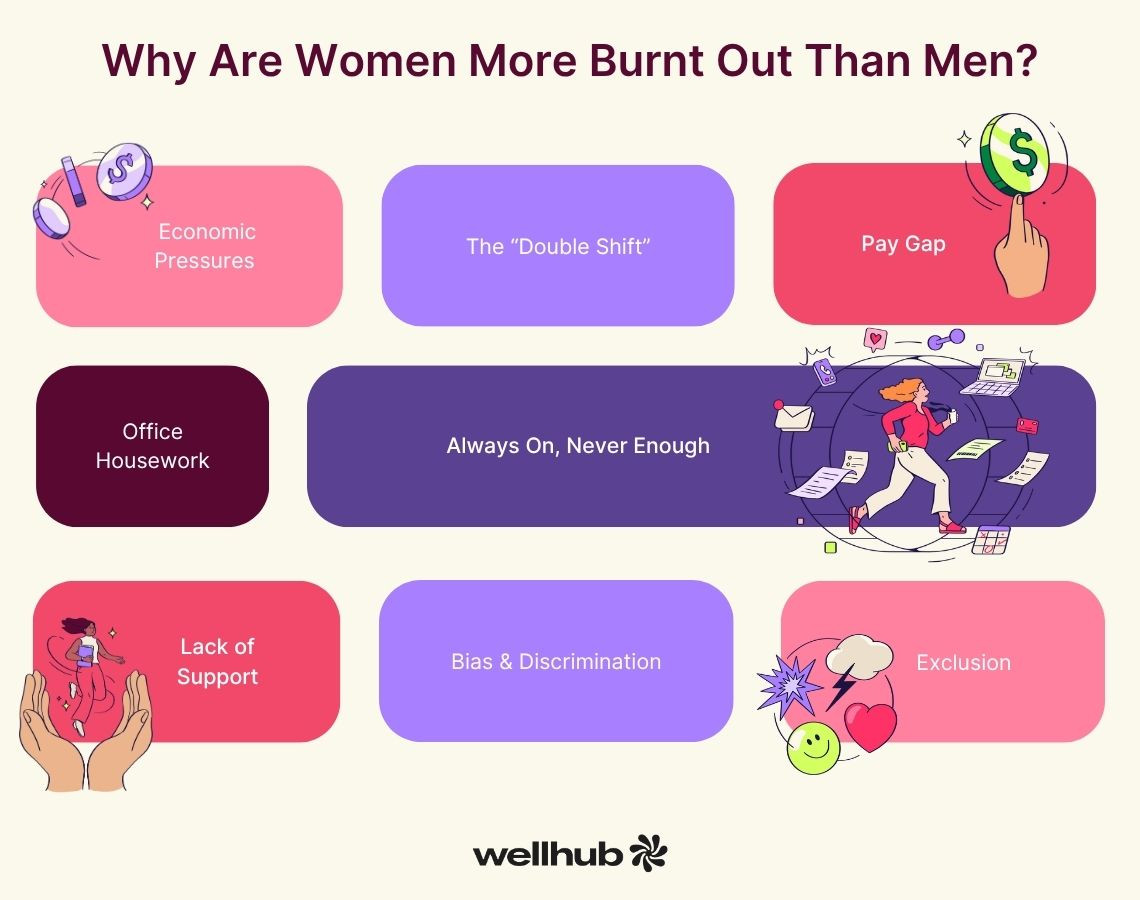
Bias, Discrimination, and “Office Housework”
Workplace inequality contributes directly to burnout. Women frequently encounter subtle biases and expectations that add stress. For example, women – particularly women of color – report having their expertise questioned or being mistaken for lower-level staff more often than men, which is draining and demoralizing. Many women also end up doing “invisible” work like taking notes, organizing team events, or training new hires (sometimes called office housework). These tasks consume time and energy but are rarely recognized in performance reviews or promotions. Moreover, diversity, equity, and inclusion (DEI) work often falls on women (and especially women of color) – such as mentoring junior women, leading employee resource groups, or spearheading inclusion initiatives. While meaningful, this extra work typically goes unrewarded and adds to their load. The Lean In report warned that women’s DEI efforts were “going unrecognized and unrewarded by most companies,” fueling frustration and burnout. Essentially, women are doing extra work for free, on top of their regular duties.
Lack of Support and Exclusion
Despite all their contributions, many women feel unsupported by their employers. Only 6% of women in Deloitte’s survey said they work for “Gender Equality Leader” organizations that truly prioritize an inclusive, flexible culture. The vast majority see little progress: just 10% of women feel their company has improved its commitment to gender equality in the last year. Limited access to mentors and sponsors can leave women without networks to advocate for them, increasing a sense of isolation. And in hybrid workplaces, women have reported feeling “out of sight, out of mind” – nearly 60% of women in hybrid roles felt left out of important interactions. This can breed disengagement and cynicism (key elements of burnout). Additionally, there’s evidence that women hesitate to take advantage of stress-relievers like flexible hours or parental leave for fear of career backlash. An astounding 95% of women believe that using flexible work options will hurt their career progress, and 93% doubt their workload would be adjusted if they did so. In short, too many women feel they have to quietly endure stress rather than ask for help – a recipe for burnout.
Economic Pressures and the Pay Gap
Burnout can also be exacerbated by financial stress. The gender pay gap (women earning roughly $0.82 to a man’s $1 on average, even less for Black and Latina women) means many women work just as hard for less reward. Some women take additional jobs or gigs to make ends meet, compounding exhaustion. And when family needs arise (e.g. a sick child), couples often decide the lower earner should scale back at work – which, due to the pay gap, is frequently the woman. This dynamic can trap women in a cycle of stalled career growth and high stress, especially single mothers who don’t have that option and must bear full financial responsibility. By 2023, with inflation and economic uncertainties, working-class women in particular report high burnout as they struggle with both work stress and financial strain.
It’s important to note that not all women experience burnout in the same way. Intersectional factors play a role. Women of color, LGBTQ+ women, and women with disabilities often face additional stressors (like discrimination or the need to code-switch in predominantly white/male environments) that heighten burnout risk. For example, Black and Latina women report more instances of feeling undermined or undervalued at work, which can contribute to emotional exhaustion. Likewise, women in certain fields – such as healthcare, education, and service industries – have faced extreme workloads and emotional labor during the past few years. In healthcare, surveys showed female nurses and doctors had burnout rates 8 to 10 percentage points higher than their male counterparts during the pandemic. These layers of identity and industry context can intensify or compound the causes of burnout outlined above.
The Impact of Burnout on Women’s Lives and Careers
Burnout has tangible consequences for women, their families, their employers, and the broader economy.
Some of the key impacts include:
- Mental and Physical Health Consequences: Prolonged burnout can take a serious toll on a woman’s health. Psychologically, burnout is linked to anxiety, depression, and even trauma-like symptoms in severe cases. Women experiencing burnout often report chronic sleep problems (insomnia), frequent headaches, or gastrointestinal issues. Over time, the stress associated with burnout increases risk of conditions such as cardiovascular disease and hypertension (due to prolonged high cortisol levels). Research has even connected burnout to higher incidence of type 2 diabetes and weakened immune function. In short, burnout can make women sick. One startling study found that burnout and chronic work stress were correlated with a higher likelihood of early death (before age 45). Clearly, burnout is a serious health hazard, not just “in your head.” Many women end up taking medical leave or using sick days due to stress-related illnesses – in fact, burned-out employees are63% more likely to take sick leave.
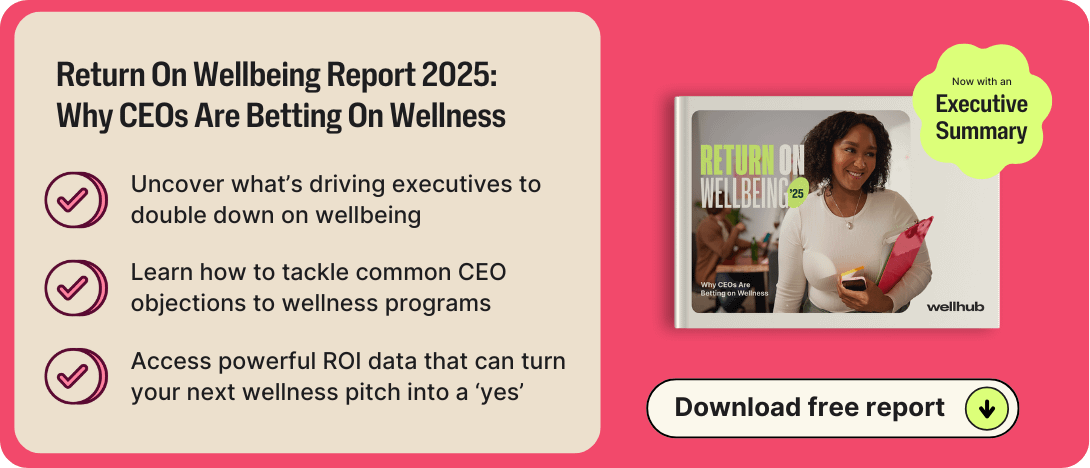
- Career Stall or Exit: Burnout is a major driver pushing women out of their current jobs or even out of the workforce entirely. In Deloitte’s 2022 survey, nearly 40% of women actively looking for a new job cited burnout as the top reason. And over half of all women surveyed said they planned to leave their employer within two years – a potential talent drain largely attributable to stress, lack of advancement, and burnout. This aligns with the Lean In finding that one in three women considered leaving their job or reducing their hours because of burnout pressures. When women cut back or drop out, it often has lasting impacts: it can be hard to re-enter the workforce at the same level after a break, and many promising careers are derailed. For women who have worked hard to reach leadership positions, burning out can mean abandoning years of progress. At the macro level, this phenomenon contributes to the leaky pipeline in women’s leadership – companies struggle to retain and promote female talent if women keep hitting a burnout wall and opting out. It’s also an economic loss: recent estimates suggest that women leaving the workforce due to caregiving and burnout issues during COVID-19 represented tens of billions in lost economic activity.
- Diminished Work Performance and Opportunities: Even if a woman doesn’t leave her job, burnout can impair her performance and rob her of future opportunities. Chronic exhaustion reduces cognitive function – studies show burnt-out workers have worse concentration, memory, and creativity. This can lead to mistakes or lower productivity, which may hurt performance reviews or chances of promotion. Burnout often causes disengagement (feeling detached and cynical), so women may speak up less in meetings or pass on taking initiative, inadvertently curbing their visibility at work. In the long run, this can reinforce a cycle where they get overlooked for advancement, contributing to frustration. It’s a bitter irony: the harder many women work (to the point of burnout), the more their performance can suffer, undermining the very goals they’re striving for. Burnout also correlates with lower confidence. Women who once aspired to leadership might lose that ambition when they’re just trying to survive each day. Notably, a Deloitte study found a quarter of women do not want a promotion to senior leadership, with company culture and burnout being top reasons. This shows how burnout can dampen women’s career ambitions and sense of purpose.
- Business and Economic Costs: Burnout among women isn’t just a women’s issue – it’s a business problem. When employees are burned out, companies experience higher absenteeism, presenteeism (employees at work but not functioning well), and turnover, all of which hit the bottom line. Burned-out employees are 6 times more likely to plan to leave in the near term, and replacing staff is expensive – often costing 50% to 200% of the employee’s salary in recruiting and training expenses. Productivity losses are significant too: one analysis attributed $1.5 trillion in costs to U.S. employers due to lost productivity from presenteeism related to stress and burnout. Healthcare costs rise as well – workplace burnout is estimated to account for $125 to $190 billion in annual healthcare spending in the U.S., driven by stress-related health issues. When women, who make up nearly half the workforce, face burnout at higher rates, these costs can be expected to climb. Additionally, there’s a talent pipeline cost: high burnout and turnover among women can reverse diversity gains. Companies lose institutional knowledge and leadership potential, and those with reputations as “burnout factories” struggle to attract new talent. (Research shows that nine in 10 employees now only consider jobs at companies that prioritize wellbeing.) In sum, a culture that breeds burnout among women is unsustainable and costly on multiple fronts: personal, professional, and financial.
Finally, we should acknowledge the ripple effect on families and society. When a working mother or caregiver burns out, it doesn’t only affect her – it can strain her children, partners, or aging parents who rely on her. Burnout can lead to irritability and withdrawn behavior at home, impacting relationships. Some women describe feeling like they are “failing everyone” which further harms mental health.
On a societal level, if large numbers of women pull back on their careers, the progress toward gender equality in leadership and pay equity slows down. We risk sliding backwards on representation in management and critical fields. Addressing burnout in women is about retaining a vital segment of the workforce and ensuring decades of advancements for women in the workplace are not lost.
Strategies to Prevent and Alleviate Burnout in Working Women
Burnout is not inevitable. Both employers and working women themselves can take proactive steps to reduce burnout and its damaging effects. The key is to address both systemic, organizational changes and personal self-care strategies – because focusing on only one side is insufficient.
Organizational Strategies: What Employers and Leaders Can Do
Promote Reasonable Workloads and Boundaries
One of the most important things employers can do is ensure workloads are manageable and respect employees’ time off. Consistently requiring long hours or “always-on” availability will burn out even the most dedicated workers. Companies should staff appropriately to avoid chronically overloading the same people (often women who may have a hard time saying no). Setting norms like no emails after hours or encouraging employees to fully disconnect during vacations can help. Remember, employees facing unreasonable time pressures are 70% more likely to burn out. Encourage managers to discuss priorities and deprioritize less urgent tasks for overwhelmed team members. In performance reviews, evaluate outcomes, not face time – this helps working parents (who may log off at 5 to pick up kids but continue later) not feel penalized for balancing their time.
Improve Flexibility Without Stigma
Flexible work arrangements (remote work options, flexible hours, compressed workweeks, etc.) are powerful tools to prevent burnout, especially for women managing other responsibilities. In surveys, 75% of HR managers say allowing flexible or hybrid schedules helps avoid burnout. However, it only helps if there’s no stigma attached. Employers must normalize using flexibility – for example, by having leadership model it (e.g., male executives taking parental leave or working from home sometimes) and by explicitly assuring employees that flexibility won’t hurt their career. If 95% of women fear flexibility will damage their promotion chances, the policy isn’t truly working. Companies can implement training for managers on managing flexible teams and measuring performance by results, not hours seen. Additionally, consider predictability for those in roles like retail or healthcare – giving as much advance notice of schedules as possible. Unpredictable schedules wreak havoc on caregivers’ lives and heighten stress.
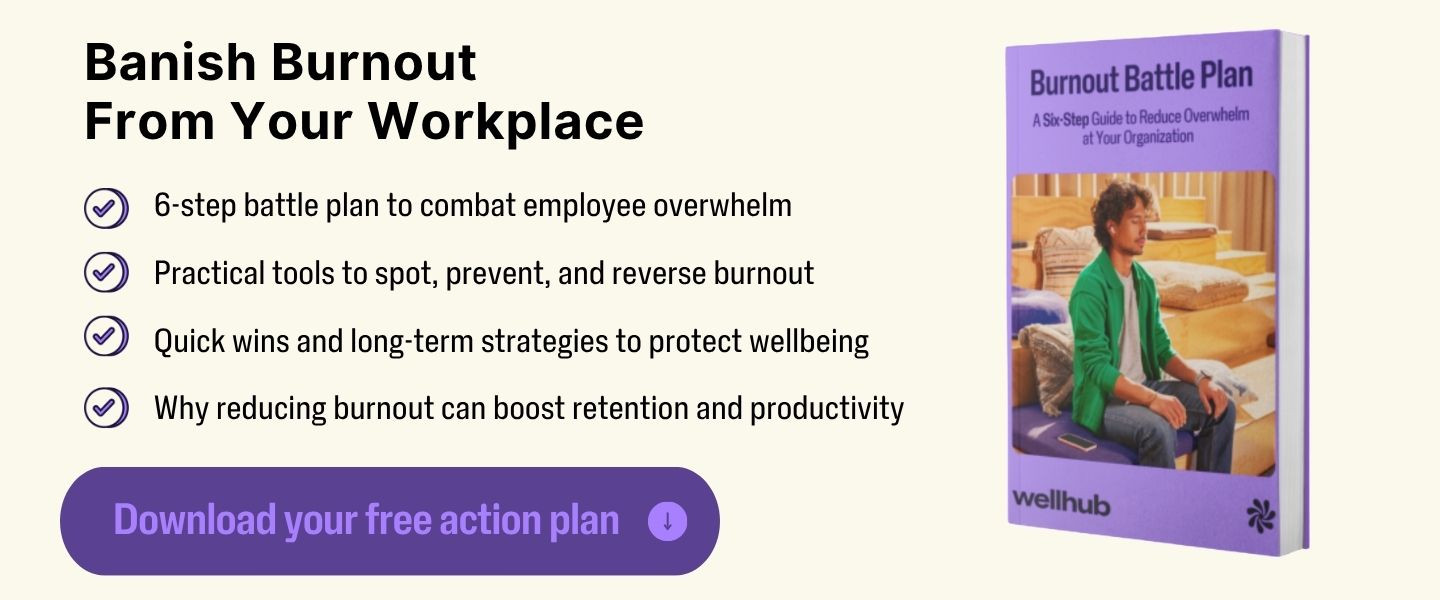
Support Caregivers with Concrete Benefits
To alleviate the “double shift” burnout driver, employers can provide benefits that help employees manage family responsibilities. This might include subsidized childcare, backup care services for emergencies, elder care resources, or even simple gestures like flexibility for school events. Generous parental leave and phased return-to-work programs can prevent new mothers from burning out. Some leading companies offer on-site or near-site daycare or emergency child care stipends – such supports pay dividends in retention. Even policies like allowing employees to set their hours (when feasible) to align with school drop-off/pickup can reduce daily stress. Remember that women who feel supported in balancing work and home are more loyal and productive. Conversely, if women feel they have to handle everything alone, burnout will thrive. Employers should also recognize and accommodate life stages: for instance, women going through menopause may experience sleep problems or hot flashes – something 27% of women surveyed reported as a challenge. Progressive employers are beginning to offer menopause support (like flexibility or wellness rooms), acknowledging that health challenges shouldn’t be ignored.
Encourage Open Dialogue and Destigmatize Mental Health
Creating a culture where employees (women and men) feel safe admitting they are overwhelmed or burned out is crucial. Too often, women hesitate to speak up, fearing they’ll be seen as incapable. Leadership can set the tone by acknowledging stress and encouraging employees to seek help when needed. Training managers to spot early signs of burnout – such as changes in behavior, increased absenteeism, or drops in performance – can lead to interventions before someone hits a breaking point. Employers should communicate what mental health resources are available, like Employee Assistance Programs (EAPs) or counseling services, and explicitly encourage their use. When a significant portion of women don’t feel comfortable talking about mental health at work, it means companies must double down on reducing stigma. Some companies have started implementing “mental health days” or company-wide wellness breaks; while not a cure-all, these signal that it’s okay to prioritize well-being. Allyship programs can also help – research shows employees are 40% less likely to burn out if they have a strong ally at work. Allies (peers or mentors) can check in on each other and provide a safe space to share struggles.
Address Bias and Unfair Workloads
Since women often face subtle (or not so subtle) inequities that contribute to burnout, employers must actively counter these. This includes distributing “office housework” tasks evenly – don’t always rely on women to plan the office party or take notes. Be mindful of who you ask to mentor new hires or lead extra committees; ensure these responsibilities are shared across genders (and if someone does take on extra, give them credit for it). Clamp down on microaggressions and disrespectful behavior – an environment where women constantly have to prove themselves or endure belittling comments will inevitably create emotional exhaustion. Diversity and inclusion training is a start, but holding people accountable for inclusive behavior is even more important. When women see their companies taking discrimination and harassment seriously (e.g., responding to reports, enacting zero-tolerance policies), it reduces the added stress of “silent suffering.” Unfortunately, 43% of women still experienced non-inclusive behaviors at work in the past year – which shows there’s much work to do. Employers should also recognize the extra DEI work women often do and formally value it (through recognition or bonuses), so it doesn’t become an unappreciated burden.
Invest in Professional Development and Pathways
Sometimes burnout stems from feeling “stuck” in one’s role or lacking growth opportunities, which can be acutely true for women who face glass ceilings. Companies that provide mentorship programs, leadership training for women, and clear paths to advancement can counteract the cynicism and demotivation that fuel burnout. When women have a sense of purpose and see a future for themselves at the company, it buffers against burnout. Conversely, if they perceive a dead-end or that all the managers above them are men (with no plan to change that), disengagement sets in. Ensure women are considered for high-profile projects, not just “safe” supportive roles, so they don’t burn out from monotony or feeling undervalued. Regular career conversations can also surface if someone is feeling burned out and might benefit from a new challenge or role change.
Create a Culture of Wellness and Empathy
Ultimately, preventing burnout requires a culture that truly values employee well-being. This comes from the top: leadership must treat wellness as a strategic priority, not an HR afterthought. Practical steps include setting realistic deadlines (avoiding perpetual “crunch” mode), encouraging use of vacation time (and not penalizing those who take it), and perhaps offering wellness perks (like gym memberships, meditation apps, or break rooms). Some companies are experimenting with policies like meeting-free days or limits on back-to-back meetings to combat Zoom fatigue. Importantly, train managers in empathetic leadership – a boss who checks in (“How are you managing your workload? What can I do to help?”) can make a world of difference. When leadership is empathetic, employees are more likely to voice concerns before burning out, allowing for adjustments. Moreover, demonstrating empathy helps counter the internalized guilt many women feel about not being “perfect” in every role. If a manager proactively offers a reduced travel schedule to a new mom, for example, it can prevent burnout and build loyalty. In short, companies should strive to be the kind of workplace about which employees can say: “They care about me as a human.” That sentiment is perhaps the strongest antidote to burnout.
Personal Strategies: What Working Women Can Do for Themselves
While organizations must lead the charge in structural change, there are also steps women can take to protect their well-being. These are not “fixes” for systemic issues, but coping strategies and habits that can build resilience and help manage stress:
- Set Boundaries and Learn to Say No: It’s easier said than done, but establishing boundaries is crucial. Communicate your limits at work – for instance, if you do not answer emails after 7 PM or you can’t take on an extra project this month, be clear (and stick to it). Many women fall into the perfectionist or people-pleasing trap of accepting every request. Practice saying “Given my other commitments, I won’t be able to do that by Friday, but I could deliver it by next week” or “I’m at capacity and wouldn’t be able to give that task the attention it deserves.” Setting boundaries also applies to home: ensure household duties are as shared as possible with partners or older children. Protect personal time – schedule breaks, put your work phone on Do Not Disturb when you need family or self-care time. Remember, boundary-setting isn’t selfish; it’s a form of self-preservation that ultimately benefits both work and home life. It might feel uncomfortable at first, but many women find that once they start drawing lines, they gain respect (and even inspire colleagues to do the same, creating a healthier team norm).
- Prioritize Self-Care (Sleep, Nutrition, Exercise): When you’re burned out, self-care is often the first thing to go – yet it’s one of the most important factors in recovery. Prioritize basic health fundamentals: aim for 7-8 hours of sleep, even if it means letting some less-important chores slide. Lack of sleep not only worsens exhaustion but also emotional resilience. Regular exercise is a proven stress reducer – even a 20-minute walk a few times a week can improve mood and energy levels. Make time for movement, and consider it as non-negotiable as a work meeting. Eating balanced meals (and not skipping meals due to busyness) helps stabilize your energy. When under chronic stress, your body depletes nutrients faster, so try to fuel it well. Also, integrate small wellness habits into your day: deep breathing exercises, stretching breaks, or a brief mindfulness meditation during lunch can interrupt stress cycles. Essentially, treat yourself with the same care you would a friend facing exhaustion. As the saying goes, you can’t pour from an empty cup – replenishing yourself isn’t indulgence; it’s necessary maintenance.
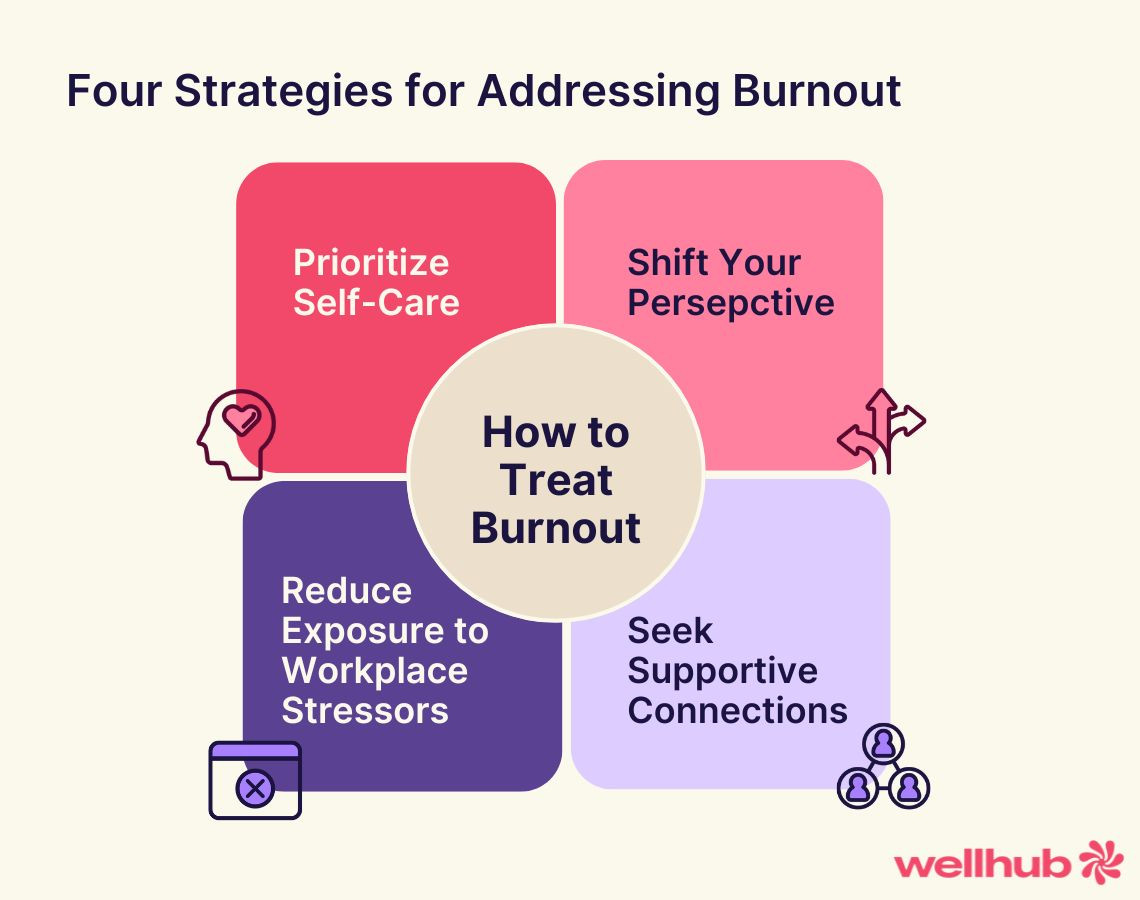
- Seek Support – Don’t Go It Alone: One hallmark of burnout is feeling isolated or that no one understands your struggle. It’s crucial to reach out for support rather than suffering in silence. This can be in multiple forms: emotionally, talk to trusted friends or colleagues about what you’re feeling – just voicing it can provide relief and often you’ll find others have gone through similar challenges. Social support is a known buffer against stress. At work, if you have a good relationship with your manager, be honest that you’re feeling overwhelmed; a decent manager would prefer to know and help adjust things than to have you silently burn out. If your workplace has a mentor program or women’s network, use those resources to find community and advice. Outside of work, consider speaking to a therapist or counselor, especially if you’re experiencing anxiety or depression symptoms. Professional help (like cognitive-behavioral therapy) can be very effective for managing burnout and building coping strategies. There is no shame in seeking therapy or counseling – it doesn’t mean you’re weak; it means you’re proactive about your mental health. Some women also find support groups (e.g., a working moms group, an online forum, or a peer circle) where they can vent and exchange tips in a judgment-free space. If burnout is severe, don’t hesitate to use available mental health leave or short-term disability benefits to take time off to recover – your health is paramount.
- Reevaluate and Realign Your Goals: Take a step back and examine what is within your control to change. Sometimes burnout can be a signal that something in your work-life alignment needs adjusting. Ask yourself: What aspects of my job or routine are most draining, and can I change them? Perhaps you’re on an overly demanding project – can you talk to your manager about rotating out or bringing in help? If you’ve been striving for a promotion that’s causing extreme stress, consider whether the timeline can be extended. It’s not about giving up on ambition, but about pacing yourself. Also identify what aspects of your work do energize you, and try to incorporate more of those if possible. If you find zero enjoyment in your current role, it might be worth exploring a move to a different team or even a career pivot to something more fulfilling – burnout can sometimes mask as just exhaustion when it’s also a mismatch of values or interests. By realigning your work with what motivates you, you can combat the cynicism component of burnout. Additionally, set small achievable goals in the short term (e.g., “this week I will leave work on time twice and go to the gym once”). Meeting these micro-goals can rebuild a sense of efficacy and control that burnout strips away.
- Practice Saying “Yes” to Yourself: Many working women spend so much time meeting others’ needs that they forget their own. Combatting burnout requires some degree of putting yourself first. Give yourself permission to take breaks and to do things you enjoy without guilt. Whether it’s reading a novel, spending a Sunday on a hobby, or scheduling a spa afternoon, do things that recharge you. Remember that downtime increases productivity in the long run – a well-rested, happy worker will outperform a chronically exhausted one. If needed, literally schedule personal activities on your calendar to ensure they happen. Engage in activities that restore you: maybe creative outlets like writing or art, social outings with friends who boost your spirits, or simply alone time if that’s what you crave. Reconnect with your “why” – what matters to you outside of work? Cultivating a sense of identity and purpose beyond your job can buffer the blows from a bad day at work. Whether it’s your family, a cause you care about, or a passion project, allocate energy to those areas too, so work doesn’t consume your whole sense of self.
Finally, if you are already in deep burnout, recognize that recovery takes time – it’s often said that healing from burnout can take weeks or months proportional to how long you’ve been burned outwellhub.com. Don’t expect a quick fix or blame yourself for not bouncing back immediately. In severe cases, taking a leave of absence or switching to a less intense role for a period might be necessary to heal. Dr. Monique Valcour, a burnout expert, advises a multi-pronged approach: reduce exposure to stressors (delegate tasks, if possible take a break from work), increase restorative activities (rest, hobbies, social connection), and reframe your mindset (e.g., acknowledge your limits, practice self-compassion rather than self-criticism). Her research also highlights the value of personalizing recovery – what works for one person might not for another, so tune into which practices genuinely help you feel better and do more of those.
Burnout Isn’t Inevitable — Wellbeing Can Break the Cycle
Burnout hits women hard. Between the pressure to overperform, the unpaid “second shift” at home, and the silence around asking for help, it’s no wonder so many are running on empty. The result? Exhaustion, stress, and a steady stream of talent walking out the door.
Wellbeing programs can help change that. When employees have access to movement, mindfulness, and support that fits their lives, they bounce back stronger. Companies that invest in wellbeing see up to 40% lower turnover and slash healthcare costs by as much as 35%. That’s a win for people and performance.
Speak with a Wellhub Wellbeing Specialist to help your team beat burnout and thrive.
Category
Share

The Wellhub Editorial Team empowers HR leaders to support worker wellbeing. Our original research, trend analyses, and helpful how-tos provide the tools they need to improve workforce wellness in today's fast-shifting professional landscape.
Subscribe
Our weekly newsletter is your source of education and inspiration to help you create a corporate wellness program that actually matters.
Subscribe
Our weekly newsletter is your source of education and inspiration to help you create a corporate wellness program that actually matters.